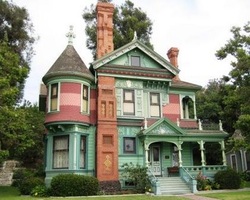Fashion And Decor
Key Points

-Clothing Determined your social status
-Wealthy women wore long, flowing dresses of luxury cloth
-Men Wore ties and hats, stiff collars and long coats
-Women Carried Parasols to protect their white skin
-Large houses were built for large families
-Clutter in rooms showed signs of wealth
More Info CLick here
-Wealthy women wore long, flowing dresses of luxury cloth
-Men Wore ties and hats, stiff collars and long coats
-Women Carried Parasols to protect their white skin
-Large houses were built for large families
-Clutter in rooms showed signs of wealth
More Info CLick here
Summary

Fashion and decor became a large factor of Victorian Culture. The way that you dressed determined your wealth and socials status. It was common for the wealthiest to have the most extravagant clothing and the largest houses, filled with expensive knick-knacks and decoration. The wealthy women wore long, flowing dresses made from fine, expensive fabrics. It was common for the women to carry around parasols on sunny days to keep their skin as white as possible. Men wore long coats, high, stiff collars, ties and top hats. They often accessorized with canes and gloves. The wealthy had large houses for their large families. Every room was filled with clutter, which represented wealth.
View Victorian fashion and over 3,000,000 other topics on Qwiki.
